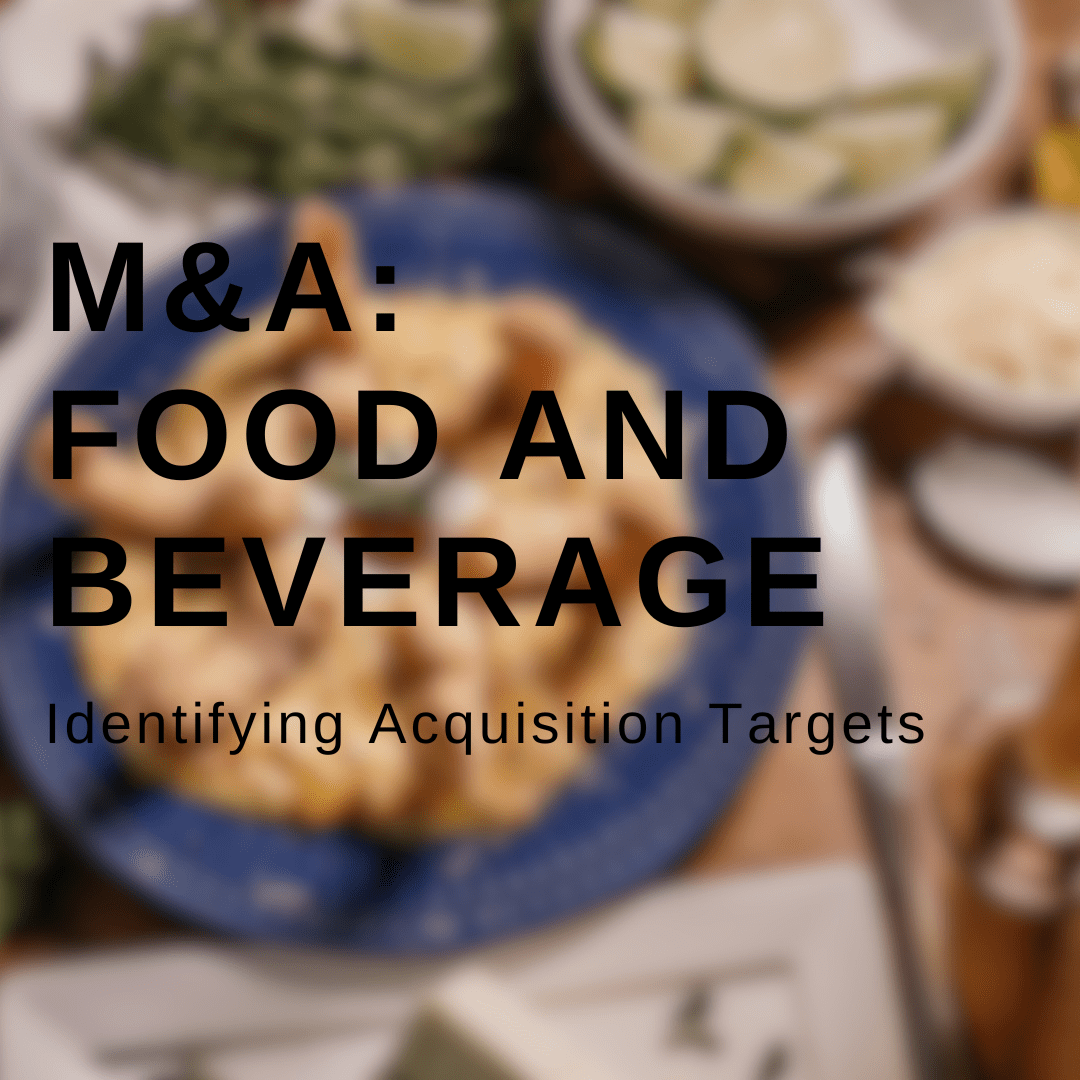Identifying Acquisition Targets – Food and Beverage
In the dynamic landscape of mergers and acquisitions (M&A), finding the perfect acquisition target in the Food and Beverage (F&B) industry can be akin to discovering a hidden gem. Identifying Acquisition Targets. However, for M&A advisors, the journey towards identifying such targets requires a keen understanding of the industry’s nuances and the ability to discern promising ventures from potential pitfalls. With the F&B sector witnessing rapid evolution and consumer preferences constantly shifting, knowing what to look for in an acquisition target becomes paramount for success.

Here, we delve into the key criteria that M&A advisors should consider when evaluating potential acquisition targets within the Food and Beverage industry:
M&A: Food and Beverage – Identifying Acquisition Targets
- Market Position and Differentiation:
- Assess the target company’s position within the market segment. Is it a niche player with a loyal customer base, or does it hold a significant market share in a broader category?
- Evaluate the company’s unique selling proposition (USP) and its ability to differentiate itself from competitors. A strong brand identity and a compelling value proposition are invaluable assets in a competitive market.
- Financial Performance and Growth Potential:
- Scrutinize the financial health of the target company, including revenue growth, profit margins, and cash flow dynamics. A track record of sustainable growth and profitability is indicative of a sound business model.
- Analyze the scalability of the business and its potential for expansion. Look for opportunities to leverage synergies and unlock value post-acquisition through strategic initiatives.
- Product Portfolio and Innovation:
- Examine the diversity and quality of the company’s product portfolio. Are there flagship products with enduring popularity, or is there a pipeline of innovative offerings poised for launch?
- Evaluate the company’s approach to innovation and R&D investment. In a rapidly evolving industry, staying ahead of consumer trends and technological advancements is essential for long-term success.
- Supply Chain Resilience and Sustainability:
- Assess the robustness of the target company’s supply chain, including sourcing practices, manufacturing capabilities, and distribution networks. A resilient supply chain is critical for ensuring continuity and mitigating operational risks.
- Consider the company’s commitment to sustainability and environmental stewardship. Increasingly, consumers are prioritizing eco-friendly products and ethical business practices, making sustainability a key differentiator in the F&B industry.
- Regulatory and Compliance Considerations:
- Conduct thorough due diligence to identify any regulatory hurdles or compliance issues that could impact the acquisition process or post-acquisition operations.
- Stay abreast of evolving regulations and industry standards, particularly in areas such as food safety, labeling requirements, and advertising restrictions.
- Brand Reputation and Consumer Sentiment:
- Gauge the target company’s brand reputation and consumer sentiment through market research, consumer reviews, and social media analytics. A positive brand image is vital for maintaining customer trust and loyalty.
- Monitor any potential reputational risks or crisis management issues that could tarnish the brand’s integrity and impact financial performance.
- Management Team and Organizational Culture:
- Evaluate the caliber of the target company’s management team, assessing their experience, leadership capabilities, and alignment with the acquirer’s strategic objectives.
- Consider the organizational culture and compatibility between the two companies. A harmonious cultural fit fosters integration and enhances post-acquisition synergy realization.
In conclusion, navigating the complexities of M&A in the Food and Beverage industry requires a meticulous approach and a deep understanding of the sector’s dynamics. By focusing on key criteria such as market position, financial performance, innovation, sustainability, regulatory compliance, brand reputation, and organizational culture, M&A advisors can effectively identify promising acquisition targets and drive successful transactions in this vibrant and ever-evolving industry.
Learn about accounts receivable factoring
